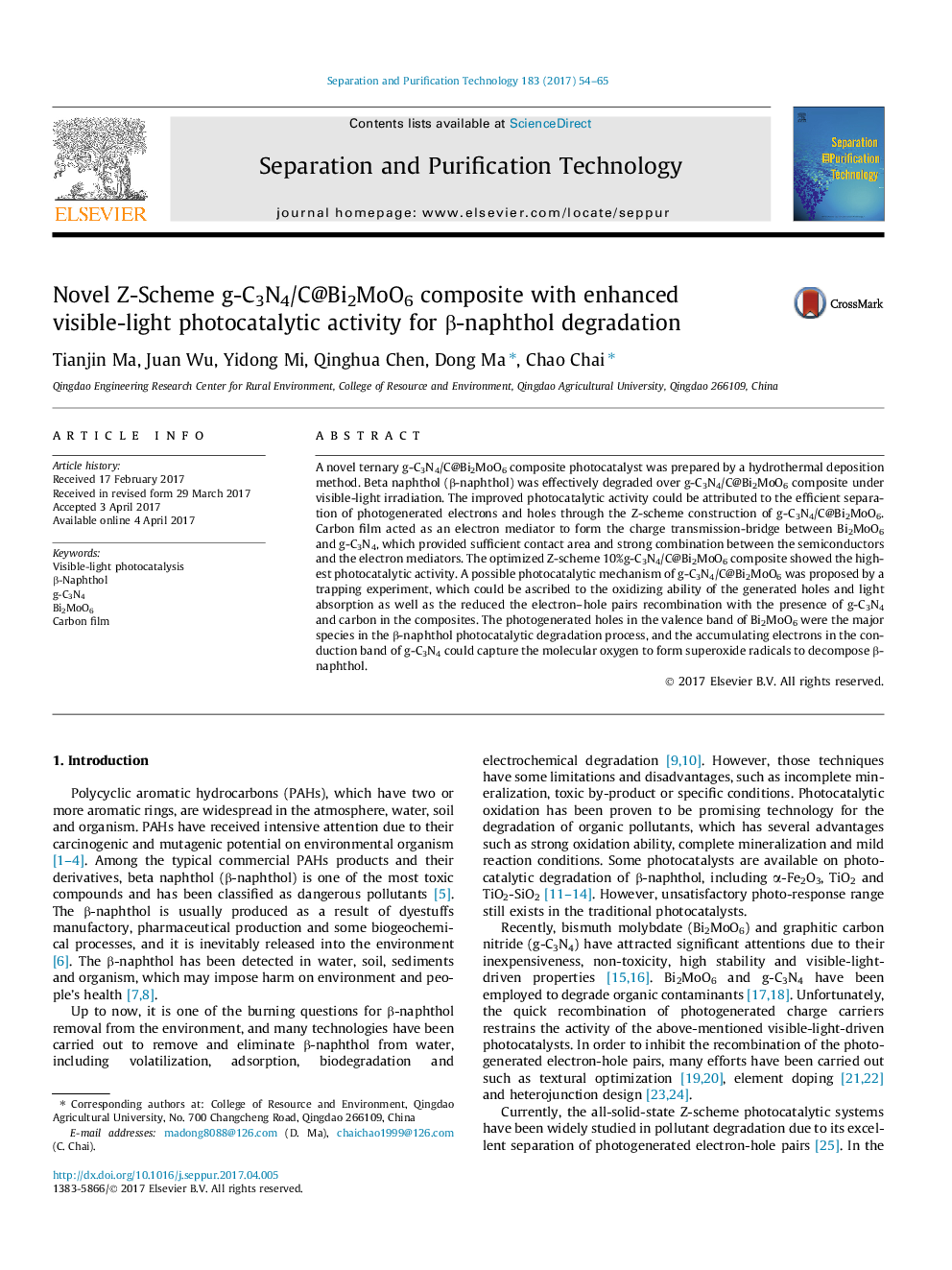| Article ID | Journal | Published Year | Pages | File Type |
|---|---|---|---|---|
| 4989918 | Separation and Purification Technology | 2017 | 12 Pages |
Abstract
A novel ternary g-C3N4/C@Bi2MoO6 composite photocatalyst was prepared by a hydrothermal deposition method. Beta naphthol (β-naphthol) was effectively degraded over g-C3N4/C@Bi2MoO6 composite under visible-light irradiation. The improved photocatalytic activity could be attributed to the efficient separation of photogenerated electrons and holes through the Z-scheme construction of g-C3N4/C@Bi2MoO6. Carbon film acted as an electron mediator to form the charge transmission-bridge between Bi2MoO6 and g-C3N4, which provided sufficient contact area and strong combination between the semiconductors and the electron mediators. The optimized Z-scheme 10%g-C3N4/C@Bi2MoO6 composite showed the highest photocatalytic activity. A possible photocatalytic mechanism of g-C3N4/C@Bi2MoO6 was proposed by a trapping experiment, which could be ascribed to the oxidizing ability of the generated holes and light absorption as well as the reduced the electron-hole pairs recombination with the presence of g-C3N4 and carbon in the composites. The photogenerated holes in the valence band of Bi2MoO6 were the major species in the β-naphthol photocatalytic degradation process, and the accumulating electrons in the conduction band of g-C3N4 could capture the molecular oxygen to form superoxide radicals to decompose β-naphthol.
Related Topics
Physical Sciences and Engineering
Chemical Engineering
Filtration and Separation
Authors
Tianjin Ma, Juan Wu, Yidong Mi, Qinghua Chen, Dong Ma, Chao Chai,
